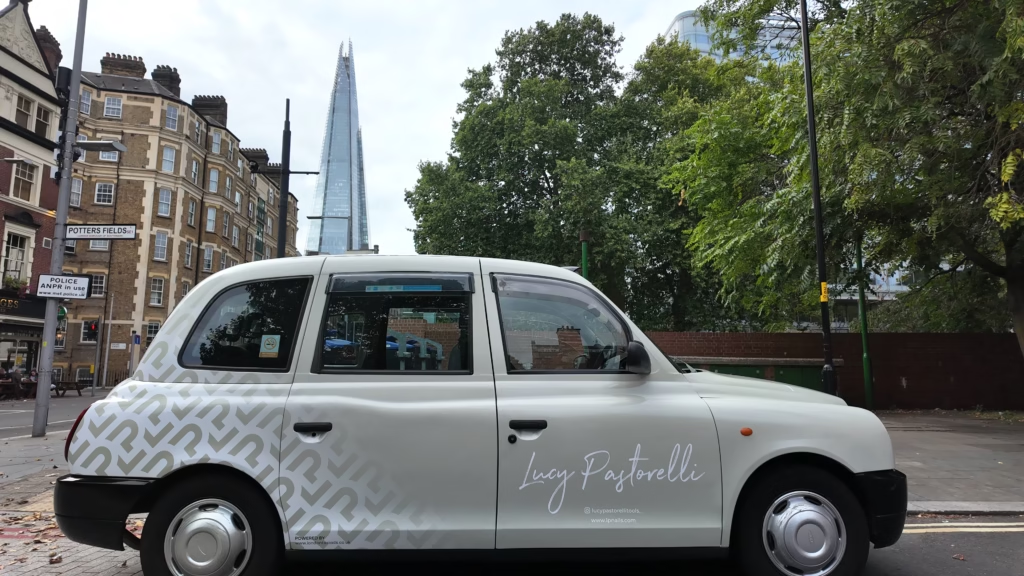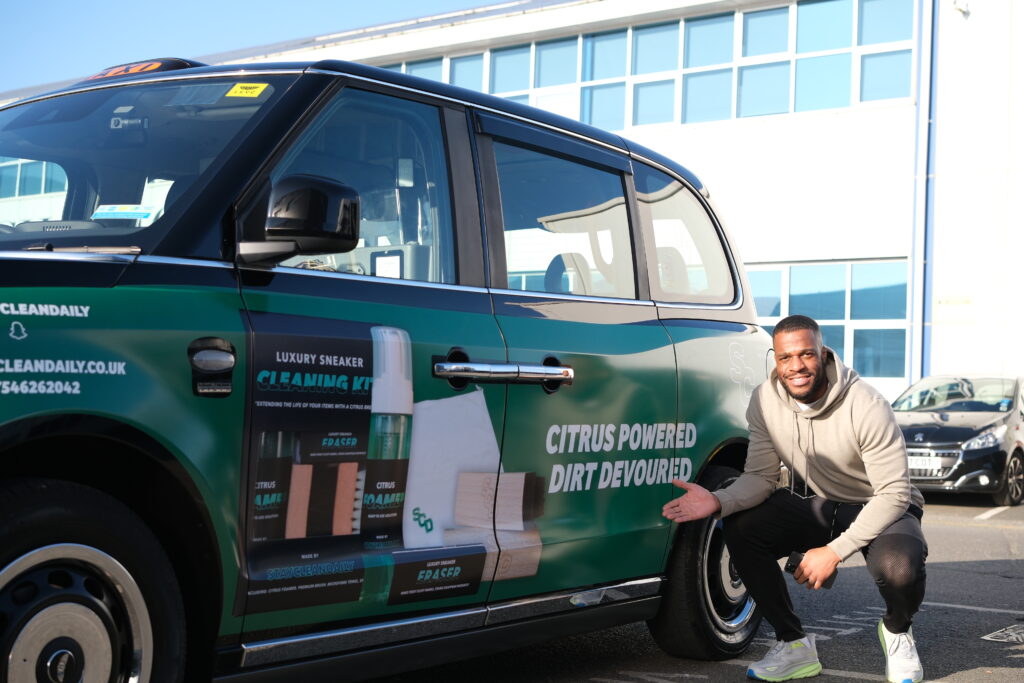London’s black cab is a global icon, a symbol of the city itself. For marketers, it is a moving billboard navigating the capital’s busiest streets. But to truly unlock the power of London taxi adverts, you need to look beyond the surface. It’s a medium with surprising depth, flexibility, and strategic nuance.
Understanding these nuances is the key to launching a campaign that doesn’t just get seen but gets results. Before you start planning your next London taxi advertising campaign, here are five essential things to kickstart taxi advertising in London.
1. It’s Not Just an Ad, It’s an Endorsement

Placing your logo on the side of a taxi is fundamentally different from buying a standard billboard. You are aligning your brand with a trusted London institution. For over a century, the black cab has stood for reliability, quality, and unparalleled knowledge. When your brand appears on one, it absorbs some of that prestige.
This association lends your business an immediate sense of credibility and establishment. It suggests you are a serious, professional player in the market. This psychological effect is incredibly powerful, transforming your ad from a simple promotion into an implied endorsement by a London icon. It’s a level of trust that digital ads struggle to replicate.
2. There’s a Format for Every Ambition (and Budget)

A common myth is that taxi advertising is reserved for huge brands with bottomless budgets. The reality is that it’s one of the most scalable out-of-home advertising formats available, with options to suit almost any goal.
- Full Wrap / Livery: This is the showstopper. Your brand takes over the entire vehicle, creating a 360-degree moving masterpiece. It offers maximum impact and is impossible to miss.
- Supersides: These large panels on the taxi’s sides are the most popular format. They offer a huge canvas for bold creative and provide a fantastic balance of high impact and cost-effectiveness.
- Interior Ads (Tip Seats & Receipts): This is your chance to speak directly to a captive audience. During the average journey, passengers have ample time to engage with ads on tip seats or branded receipts. This format is perfect for more detailed messaging, special offers, or QR codes to drive digital action.
3. You Can Track and Target More Than You Think

Don’t believe the myth that out-of-home advertising is a “black box” when it comes to ROI. Modern taxi advertising is a highly measurable and targetable medium.
- Measuring Reach: A single branded taxi can generate millions of impressions a month. This isn’t a guess; it’s calculated using GPS data that tracks a taxi’s mileage and routes through different London postcodes, giving you a clear picture of your campaign’s reach and frequency.
- Driving Direct Response: The interior of a cab is the perfect place to bridge the gap between your physical ad and your digital world. By placing a unique QR code, a special offer, or a custom URL on a tip seat ad, you can directly track how many people are engaging with your campaign.
- Strategic Targeting: While taxis travel all over, campaigns can be strategically focused. By using taxis based in a specific borough or those known to frequent certain areas (like the financial district or West End), you can ensure your message is concentrated where your target audience lives, works, and shops.
4. Rules and Creativity Go Hand-in-Hand

You can’t just put anything on the side of a taxi. All designs must be submitted to and approved by Transport for London (TfL), which ensures that ads are safe, legal, and appropriate. This is a crucial step that a reputable taxi advertising agency will manage for you.
This regulatory oversight is a good thing; it maintains the premium quality of the medium. It also means your creative needs to be smart. The best taxi ads are bold, simple, and instantly comprehensible. The message must be clear enough to be understood in the few seconds it takes for the taxi to pass by. It’s also important to note the distinction: these advertising rules apply to licensed black cabs. Unsolicited advertising is generally not permitted on or in private hire vehicles (minicabs).
5. The Medium is Greener and Smarter Than Ever

The classic black cab is evolving. A significant and growing portion of London’s taxi fleet now consists of modern, hybrid or fully electric models (LEVCs). This transformation has two key benefits for advertisers.
Firstly, it allows your brand to run a high-impact out-of-home campaign with a powerful sustainability message, aligning your business with eco-friendly practices. Secondly, the medium is becoming smarter. The rise of digital taxi tops brings the flexibility of programmatic advertising to the streets, allowing for video content, real-time creative changes, and even ads that can be triggered by time of day or location.
Conclusion
Taxi advertising in London is a sophisticated and powerful marketing tool that offers far more than meets the eye. It’s a prestigious, flexible, measurable, and modern medium that allows brands of all sizes to cut through the noise and make a genuine connection with their audience. By understanding these five key points, you can move beyond simply buying space on a vehicle and start building a truly strategic campaign. It’s about more than being seen; it’s about being seen in the right way. Is your brand ready to move with the city?
Frequently Asked Questions
1. How much does it cost to advertise on a London taxi?
Costs vary by format. A full wrap can be £3,000–£4,000 per taxi per month, while supersides are around £500–£700. More affordable interior ads on tip seats can be as low as £100–£200, making it accessible for various budgets.
2. How long does a typical campaign last?
While a short, four-week campaign is great for a specific event or launch, the most effective campaigns for building brand awareness typically run for 8 to 12 weeks or longer. This ensures high frequency and builds strong brand recall.
3. How quickly can a campaign go live?
The process is surprisingly fast. Once your artwork is finalised and approved by TfL, a fleet of taxis can be wrapped and on the road within 3 to 4 weeks, allowing you to react quickly to marketing opportunities.
4. Can you advertise inside the taxi?
Yes. Interior advertising on tip seats, receipts, and even digital screens is highly effective. It allows you to engage with a captive audience for the entire journey, making it ideal for detailed messages or driving a direct response.
5. What’s the difference between advertising on a taxi vs. a bus?
Taxis offer greater prestige and flexibility. Unlike buses, which follow fixed routes, taxis can access exclusive areas, high-end shopping streets, and specific event venues, allowing for more precise targeting of a premium audience.